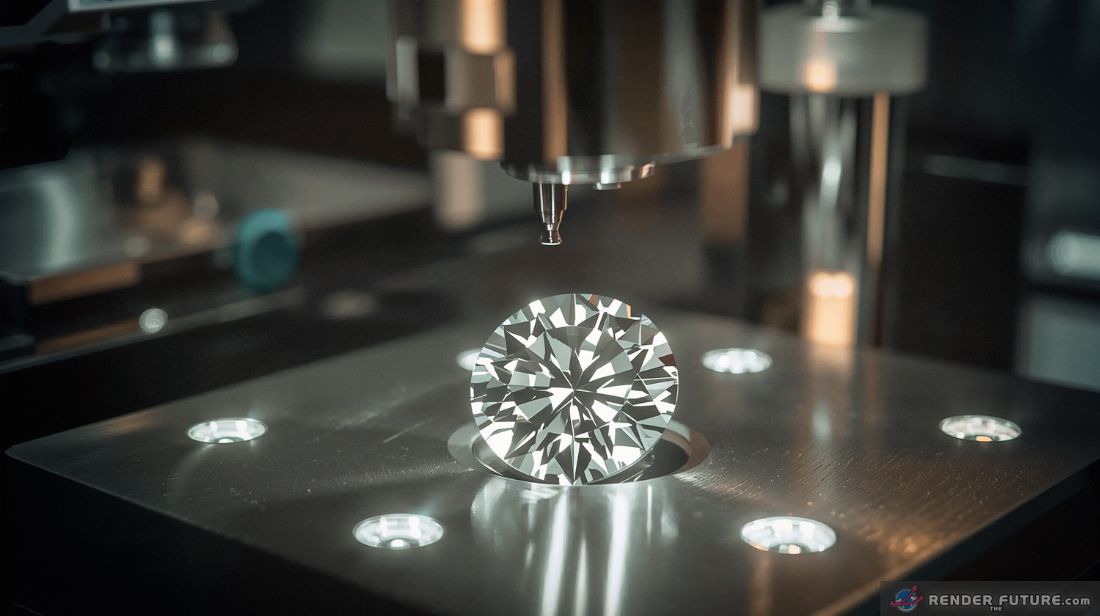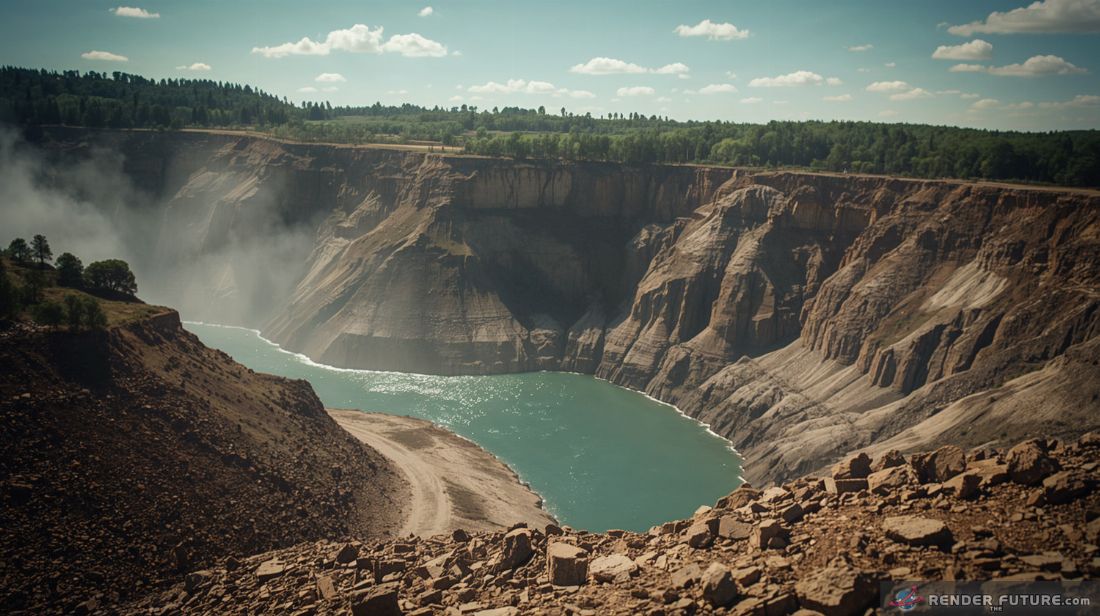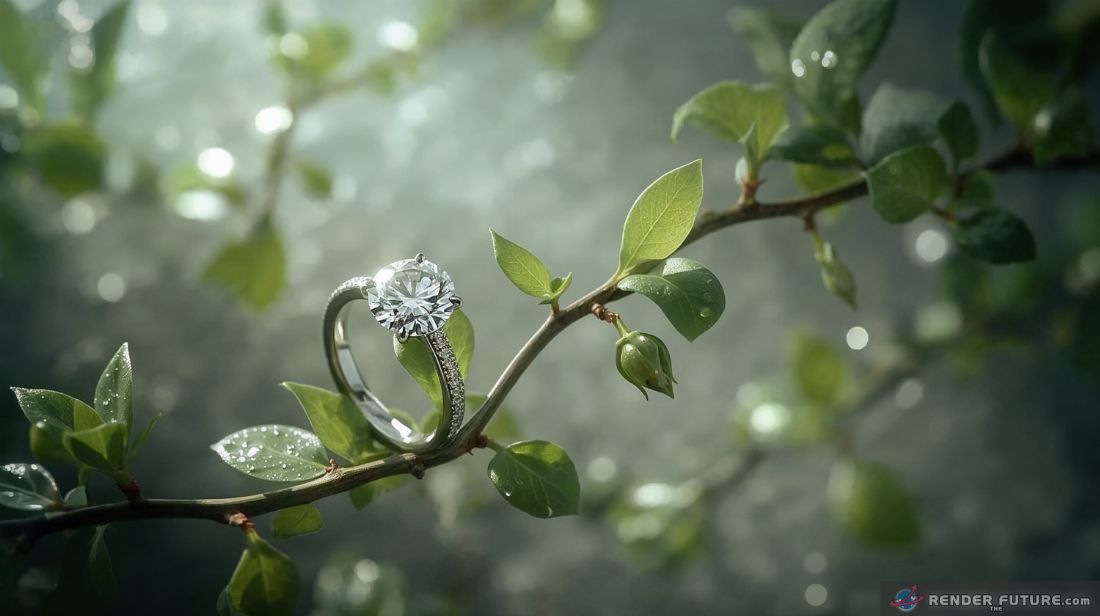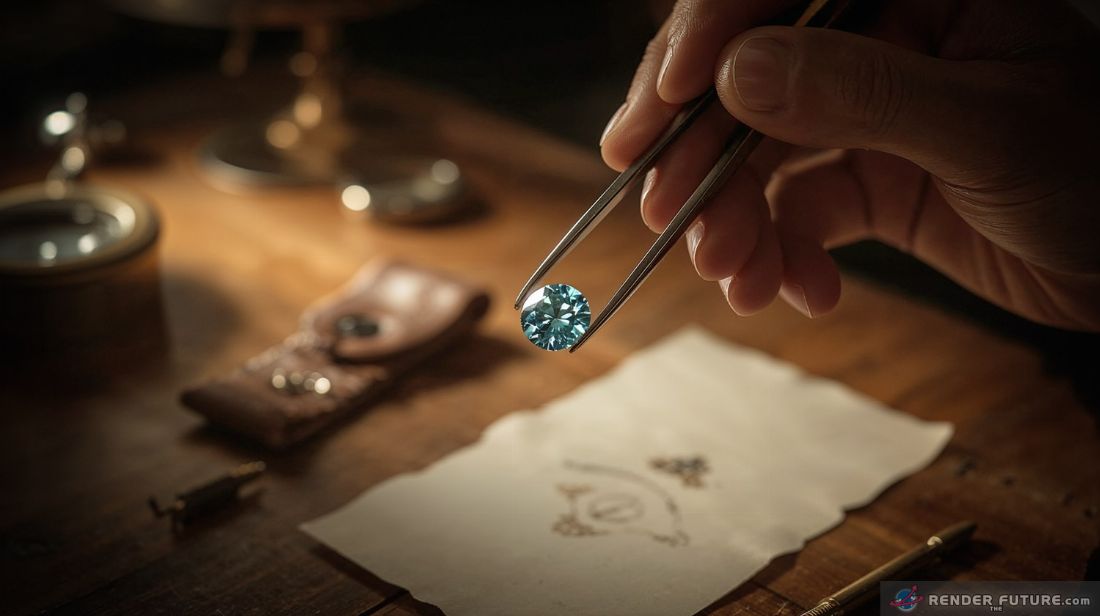Diamonds Made in Labs Romantic Revolution or Industry Killer?
The End of Dirty Diamonds?
Forget blood diamonds – the future sparkle comes from high-tech labs. Scientists can now grow flawless diamonds in weeks that are physically and chemically identical to mined stones. The kicker? They cost 40-60% less and leave no environmental scars.
Why This Changes Everything:
- No more destructive mining (bye-bye, giant craters)
- Identical quality at half the price (sorry, De Beers)
- Custom colors and cuts impossible in nature (hello, neon pink diamonds)
The Industry Pushback
Mining giants claim lab diamonds lack “romance” – but millennials aren’t buying it (literally). 70% of young couples now consider lab-grown stones, forcing jewelers to adapt or die.
Your vote:
💎 Like if you’d choose a lab diamond
⛏️ Comment: Are mined diamonds still worth it?
 Here’s the twist: jewelers can’t tell lab-grown diamonds apart from mined ones without specialized equipment – even the “experts” get fooled. The GIA (Gemological Institute of America) now issues identical grading reports for both, with just a tiny “Laboratory-Grown” notation in the fine print.
Here’s the twist: jewelers can’t tell lab-grown diamonds apart from mined ones without specialized equipment – even the “experts” get fooled. The GIA (Gemological Institute of America) now issues identical grading reports for both, with just a tiny “Laboratory-Grown” notation in the fine print.
So when you flaunt that rock, nobody will know it’s high-tech… unless you brag about saving $10K and the planet.
The Romance Debate: Are We Really Losing Magic?
Let’s address the elephant in the room – the mining industry’s claim that lab-grown diamonds lack “romance.” What’s more romantic: a stone ripped from the earth under questionable labor conditions or one crafted with precision, free from human suffering?
The notion that rarity equals love is a marketing masterstroke, but let’s be real – love isn’t measured in carats pulled from dirt. It’s in the intention, the story, the future you’re building. And what’s more futuristic (and frankly, cooler) than a diamond born from innovation rather than exploitation?
The Environmental Win We Can’t Ignore
Here’s a world where luxury doesn’t come with a side of guilt. Traditional diamond mining displaces communities, drains water resources, and leaves moonscapes in its wake.
Lab-grown diamonds? They require a fraction of the energy and leave ecosystems intact. Sure, they’re not zero-impact (what is?), but when the alternative is ecological carnage, the choice seems glaring. The question isn’t why we’d switch – it’s why we haven’t faster.
Let’s cut through the industry’s greenwashing – traditional diamond mining isn’t just “dirty”; it’s an ecological horror show. A single carat of mined diamond displaces nearly 100 square feet of earth and consumes over 120 gallons of water.
Meanwhile, lab-grown diamonds slash land disruption by 99% and use a fraction of the water. This isn’t progress; it’s a revolution disguised as a gemstone.
Carbon Footprint: The Industry’s Dirty Little Secret
Mining giants love to tout “carbon-neutral” initiatives, but let’s be honest – they’re playing catch-up. Lab diamonds already operate at 30-40% lower carbon emissions, and with renewable energy, that number plummets further. The kicker? Labs can be located anywhere – no need to bulldoze forests or blast through ecosystems. Imagine a diamond supply chain that doesn’t involve diesel-guzzling excavators or conflict zones.
That’s not just cleaner; it’s common sense.
Water Wars and Toxic Legacies
Ever heard of acid mine drainage? It’s the mining industry’s gift that keeps on giving – contaminating waterways for centuries after a mine closes. Lab diamonds, by contrast, leave no toxic runoff, no poisoned rivers, no communities begging for clean water.
The “scarcity” here isn’t diamonds – it’s drinkable water. Why choose a luxury that literally dries up the planet?
Biodiversity vs. Bling
From Botswana’s savannas to Canada’s tundra, mining scars landscapes forever. Lab-grown stones don’t demand habitat destruction or endangered species’ displacement. The catch? We’re in the middle of a mass extinction, yet some still argue that “natural” diamonds – synonymous with unnatural destruction – are the ethical choice. Time to rewrite that narrative.
The Bigger Picture: A Tipping Point for Luxury
This isn’t just about diamonds – it’s about redefining what luxury means. True exclusivity shouldn’t come at the cost of the planet. Lab-grown gems prove that sustainability and sophistication aren’t mutually exclusive. So here’s the challenge: If you wouldn’t accept a “blood diamond,” why tolerate a climate-wrecking, ecosystem-killing one? The future of sparkle is clean. The only question left: Are you brave enough to wear it?
The Price Revolution – And Who’s Fighting It
De Beers once convinced us that diamonds = forever. Now, they’re scrambling to convince us lab-grown gems = cheap. But here’s the twist: affordability doesn’t diminish value; it democratizes it.
When a generation is drowning in student debt and climate anxiety, a 60% discount on the same sparkle isn’t “cheap” – it’s sanity. The industry’s panic is palpable: their monopoly is crumbling, and their rhetoric is getting desperate.
The Customization Game Changer
Nature has limits; technology doesn’t. Want a diamond in a shade blue that doesn’t exist underground? Done. Prefer a cut that defies physics? Easy. This isn’t just jewelry – it’s wearable art, unshackled from geological chance. The irony? We’re returning to what gems once symbolized: personal meaning, not mass-marketed tradition. The future of luxury isn’t mined – it’s designed.
Forget waiting millennia for nature to cough up another clear diamond – lab-grown tech lets us play alchemist in real time. Want a vivid electric-blue diamond that glows under UV light? A geometric cut so precise it bends light like a prism? No problem.
This isn’t just jewelry; it’s wearable sci-fi, where the only limit is imagination. Traditionalists may scoff, but history favors the bold: the same people clutching their pearls over lab diamonds once mocked synthetic sapphires – now they’re in every high-end watch. The future belongs to those who design rarity, not just dig it up.
The Provocative Bottom Line
The resistance to lab-grown diamonds isn’t about quality or romance – it’s about power. The old guard is terrified because this isn’t a trend; it’s a reckoning. Sustainability, ethics, and innovation are winning.
So here’s the question: When your grandkids ask where your diamonds came from, do you want to describe a dystopian mine or a brilliant human achievement?
The answer might just redefine what “precious” really means.

References and Sources:
- Journal of Gemology: “Lab-Grown Diamond Quality Analysis” (2023)
- Bain & Company Diamond Industry Report (2024)
- @DiamondFoundry’s carbon-negative production claims









